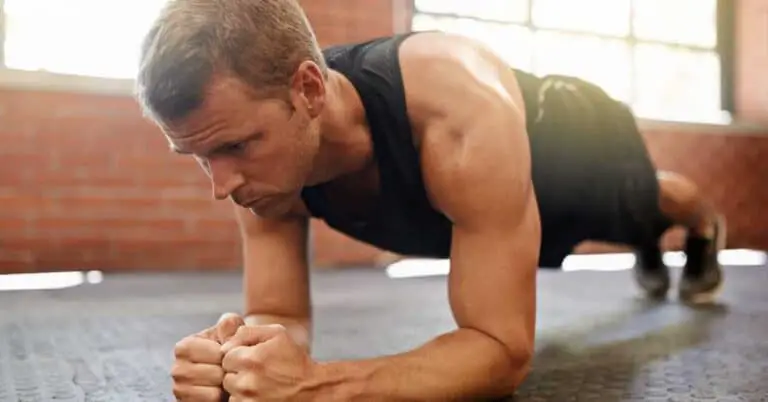Are you looking for a safe way to boost your performance? Compression shirts help athletes by increasing blood flow to working muscles. They keep your muscles warm and pliable, plus reduce the chance of injury. But, with so many brands and styles to choose from, how do you know which one is right for you?
** I may earn a commission when you purchase through a link on this page. **
In this article, I will help you choose the perfect compression shirt for your body and your needs.
Importance of wearing a compression shirt
Compression shirts are a popular choice for athletes and for individuals looking for muscular support. They’re designed to improve blood flow and reduce muscle fatigue. This can lead to better performance and speeds up recovery after a hard workout.
Overall, compression shirts are functional athletic gear that boosts performance and gets you ready for your next workout!
Types of compression shirts
When it comes to compression shirts, there are a few different options available.
Short-sleeve compression shirts are a great option for hot weather or for those who prefer to show off their arms. They provide the same level of compression as a long-sleeve shirt, but with less coverage.
On the other hand, long-sleeve compression shirts are perfect for cooler weather, or for those who want more coverage. They provide the same level of compression as a short-sleeve shirt, but with more coverage.
Tank-top style compression shirts are perfect for those who want a more minimalistic look. They provide the same level of compression as a short-sleeve or long-sleeve shirt, but with less coverage on the arms and shoulders.
Each type of compression shirt has its own benefits and it is important to consider what type of look and coverage you prefer as well as the weather conditions before making a decision.
Pros and Cons of Each Type
There are several different types of compression shirts available, each with its own set of pros and cons.
Long-sleeve compression shirts provide full coverage and support to the upper body. They are great for cold weather or outdoor activities, and can also help protect the skin from sun exposure. The cons are that they can be hot to wear in warm weather and may not allow as much freedom of movement as other types of compression shirts.
Short-sleeve compression shirts provide support to the upper body while allowing for more freedom of movement in the arms. They are great for warm weather or indoor activities, and can also be worn as a base layer for added warmth in cold weather. The cons are that they do not provide as much coverage as long-sleeve compression shirts and may not offer as much protection from the sun or other elements.
Compression tank tops provide support to the upper body and are great for warm weather or indoor activities. They allow for maximum freedom of movement in the arms and shoulders, and can also be worn as a base layer for added warmth in cold weather. The cons are that they do not provide as much coverage as long-sleeve or short-sleeve compression shirts and may not offer as much protection from the sun or other elements.
Ultimately, the best type of compression shirt for you will depend on your specific needs, preferences, and activity level.
Understanding Your Body Size
Compression shirts are designed to provide support and comfort, so it’s important to find the right size for you.
To determine which size you need, take accurate measurements of your chest, waist, and hips.
Compare these measurements to the sizing charts provided by the manufacturer. If you prefer a looser fit, be sure to factor in length as well – some brands provide more coverage than others.
Once you have your measurements, compare them to the size chart provided by the manufacturer.
Keep in mind that different brands may have slightly different size charts, so be sure to check the size chart for the specific brand you’re considering.
Additionally, it’s also important to take into account your personal fit preference – some people prefer a tighter fit for more compression, while others prefer a looser fit for more comfort. When choosing your size, be sure to factor in both your measurements and your desired fit.
How to measure chest, waist, and hips
When it comes to shirts, there’s a lot to consider. Size can vary a great deal between brands, so it’s important to review sizing charts for your particular shirt.
The three main areas to measure are the chest, waist, and hips.
To measure your chest size: wrap the tape measure under your armpits and around the widest part of your chest. Make sure to keep the tape level and snug but not too tight.
To measure your waist: place the measuring tape around the narrowest part of your hips and above your belly button.
If you need to measure your hips: take measurements around the widest part of your hips—around your buttocks—and record these numbers on a note card or piece of paper.
Factors to Consider When Choosing a Compression Shirt
When shopping for a compression shirt, keep a few things in mind. First, you should consider the amount of compression the shirt provides.
Different shirts have varying levels of compression. Choose the one that’s appropriate for your needs and activities.
Next, pay attention to the material of your compression shirt. Look for moisture-wicking fabrics to keep you dry and comfortable during intense activities.
Finally, comfort is crucial. Make sure your compression shirt is comfortable and not overly restrictive when you wear it; if possible, take the time to try it on before purchasing it so that you can be sure about its fit.
Body shape and physical activity level
Your body shape and activity level are also important factors to consider.
The shape of your body shape affects how the shirt fits and feels, so choose one that’s designed to fit your body type.
For example, if you have a larger chest, you may want to look for a shirt with a looser fit. Similarly, if you have a smaller frame, you may want a tighter fit.
Your physical activity level should also be considered. If you’re a high-intensity athlete, opt for a shirt with a higher compression level for improved recovery. If have a more moderate activity level, a lower compression level may be more suitable for you.
Conclusion
Choosing the right size is key to getting the most benefits out of your compression gear. It’s important to understand your body size and measure your chest, waist, and hips to find the right size.
Consider compression level, material, comfort, and how you plan to use the shirt when shopping.
Understanding the pros and cons of each type of shirt can also help you in making a decision. Remember, a compression shirt that fits well will provide maximum support and comfort, allowing you to perform at your best. So, take the time to find the perfect fit and enjoy the benefits of wearing a compression shirt.

Claudia Faucher is a full-time fitness training expert and lifestyle blogger. She is also been a certified Les Mills BodyPump instructor for the past 5 years and a fitness instructor for over 20 years. Claudia is a personal trainer and creates fitness training programs for seniors and people of all ages. She likes to use her skills and experiences to help others on their fitness journeys.

